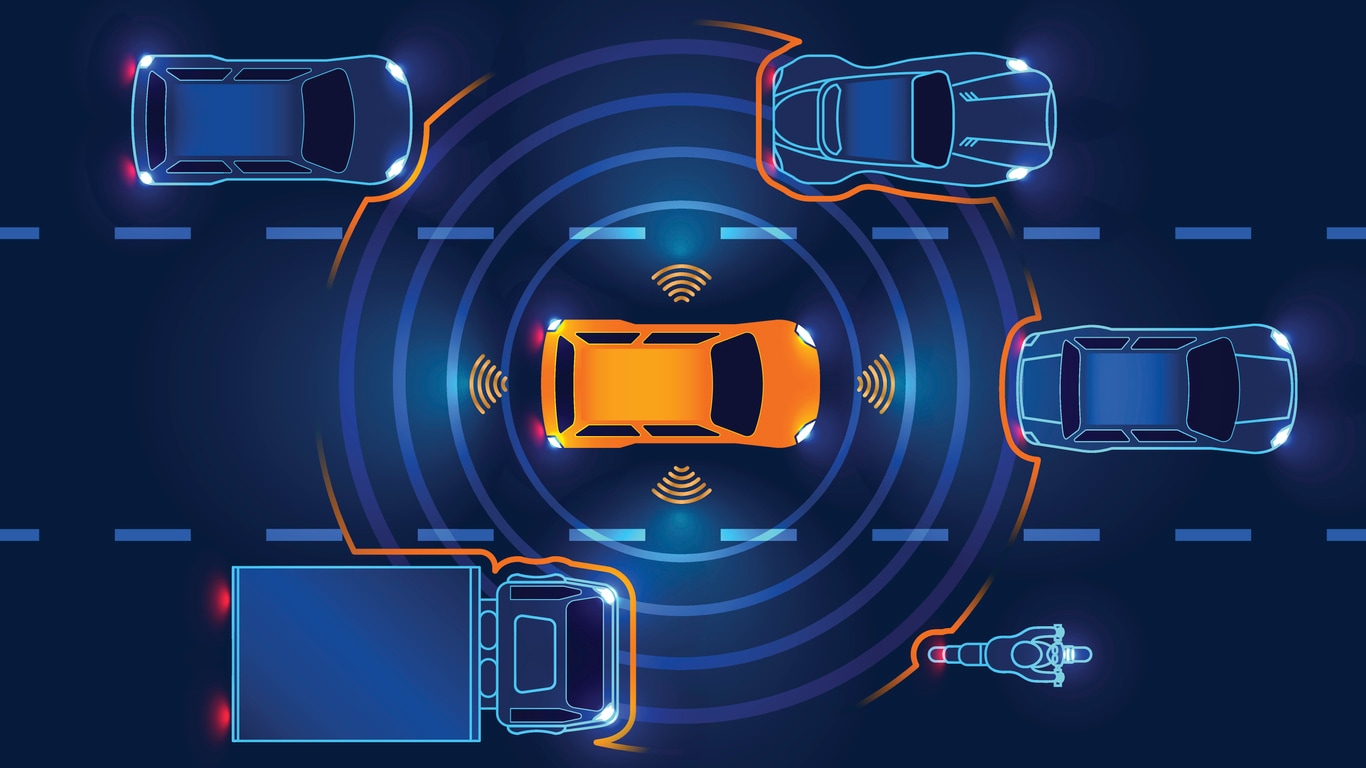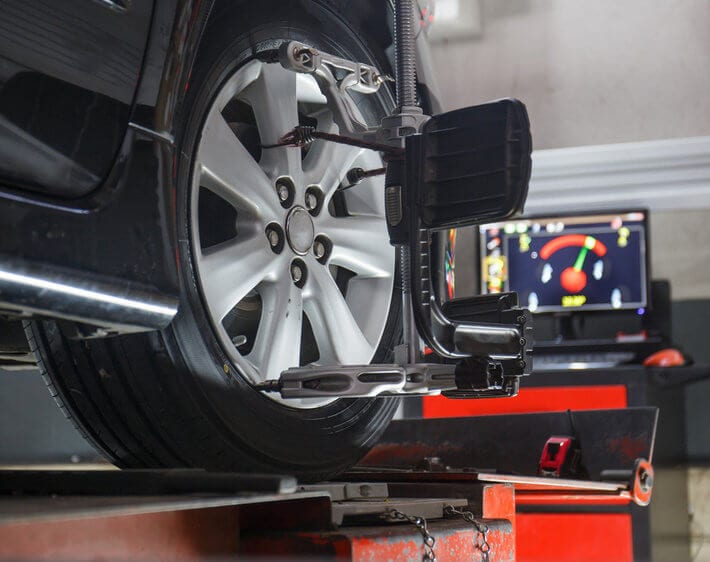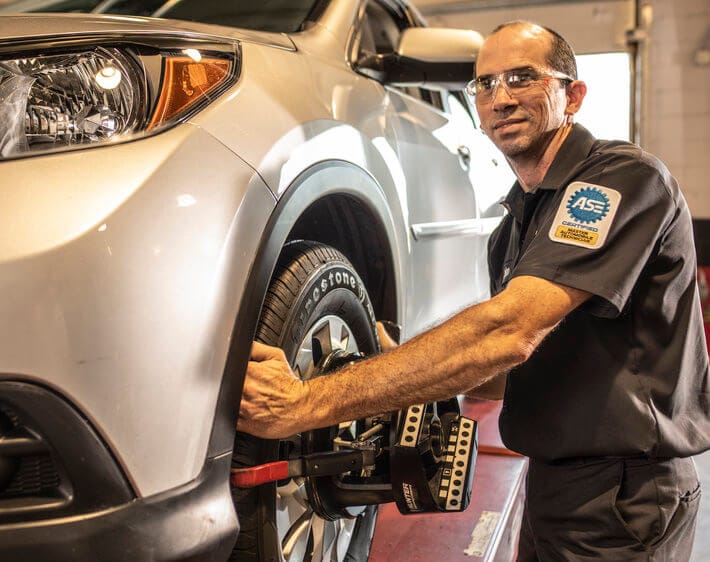Advanced Driver Assistance Systems (ADAS) are not new technologies, but they've progressed quite a bit over the years. Today, almost every new car comes with some sort of ADAS to help improve safety and make driving more convenient. Learn what ADAS systems are, how they work, and about current ADAS technologies to better understand how your car operates in this guide.
What Is An Advanced Driver Assistance System?
So, what does ADAS stand for, and what does it do? ADAS, which stands for Advanced Driver Assistance Systems, uses sensors, cameras, radars, and other systems to help you stay safe on the road. Think active cruise control, blind spot monitoring, etc.
We all know how dangerous it can be if a car in front of you suddenly brakes and stops in place. Sometimes it's difficult to react on time in these situations. ADAS can react in extreme circumstances to help prevent car crashes.
ADAS vs. Autonomous Driving
It's important to distinguish ADAS from autonomous vehicles — self-driving cars. Depending on the vehicle, ADAS may be incorporated into steering, braking, or cruising/accelerating systems. Some versions of ADAS may only warn the driver of hazards by illuminating a dashboard light, while others may take action for the driver.
Autonomous vehicles, however, are typically the most advanced, meaning they can operate independent of the driver. If a vehicle has all of the ADAS systems and the most advanced level of integration, it may have the ability to be fully autonomous. This means that it can potentially control steering, braking, and cruising/acceleration without any input from the driver.
How Does Driver Assist Technology Work?
ADAS systems use a combination of cameras, radars, sensors, and ultrasound to assess the car's surroundings to respond or alert you of potential issues. When fully equipped, these systems scan everything in your car's vicinity to help improve your safety.
The radars and cameras of a full ADAS can far surpass the human eye and perform 360-degree coverage, even in challenging weather conditions or poorly illuminated areas.
Current ADAS Technologies
There are many ADAS technologies on the market today, and car manufacturers decide which ADAS features to add to their cars. Additionally, cars from different brands can vary significantly in their ADAS abilities, even if the technologies use the same or a similar name.
Adaptive Cruise Control
Adaptive cruise control often uses radars and cameras to help you stay at a safe distance from the vehicles in front. The car can accelerate or apply brakes to match the surrounding traffic. This ADAS makes long highway trips less cumbersome and more convenient.
Lane Departure Warning
A lane departure warning typically notifies you if you drift out of your lane without using a turn signal. The car can warn you with steering wheel or seat vibrations, dashboard alerts, or warning sounds. More advanced systems like the lane-keeping assist can also make a slight steering correction to pull you back into your lane.
Automatic Emergency Braking
Automatic emergency braking (AEB) can brake on demand. For example, if another driver abruptly stops in front of you, AEB may initiate the brakes even before the driver reacts, minimizing the collision's effects or preventing it altogether.
Automatic Parking Assistance
Parking aid systems can vary a lot in their abilities. Some systems offer fully autonomous parking without a driver, while others can only aid you in steering. It's tough to park your car in certain locations, so having a quality ADAS can make this process easier.
Blind Spot Monitor
Blind spot monitors can potentially warn you if a vehicle enters your blind spot on either side of your car. Advanced systems can even notify you if they detect a fast-moving vehicle in the next lane. This is one of the most popular ADAS technologies, and for a good reason. Blind spot monitors use cameras or other sensors to see where you physically can't from the driver's seat.
Night Vision System
Night vision systems can typically improve your perception in darkness or bad weather. These systems enhance visibility beyond the reach of your car's headlights using infrared cameras, GPS, radars, thermal imaging, or other sensors.
Maintaining Your ADAS System
Since ADAS relies on many components, your safety can be compromised if they are not properly aligned. For example, if your car's cameras are misaligned by as little as one degree, then the lane departure warning, for example, can lose effectiveness and put you in danger.
Maintaining your ADAS systems is crucial to stay safe on the road. ADAS sensors, cameras, radars, and other system parts must be calibrated by an experienced technician per your manufacturer's recommendations. We recommend ADAS alignment after some mechanical repairs, body shop visits, wheel alignment services, and when replacing certain windshields.
ADAS and Wheel Alignments
Wheel alignments are essential for driving safety and comfort. And if your vehicle has ADAS technologies, they may need to be calibrated after the wheel alignment. Since ADAS systems are very sensitive, qualified ADAS technicians need to calibrate them with your freshly aligned wheels as part of a Safety Systems Alignment.
A misaligned wheel or a misdirected sensor can cause unnecessary emergency braking, fail to warn you if you are departing from your lane, make parking more challenging, or even lead to an accident. So, if your car has ADAS systems, they must be properly maintained to get the most out of their safety features.
Schedule Your Safety Systems Alignment Service Today
Driving a car or truck with ADAS can significantly improve vehicle safety, protecting you, those you love, and other motorists on the road. If your vehicle has ADAS and requires servicing, stop by your nearest Tires Plus for a Safety Systems Alignment. After all, we're here to help protect the car that protects you. Schedule your appointment today!


